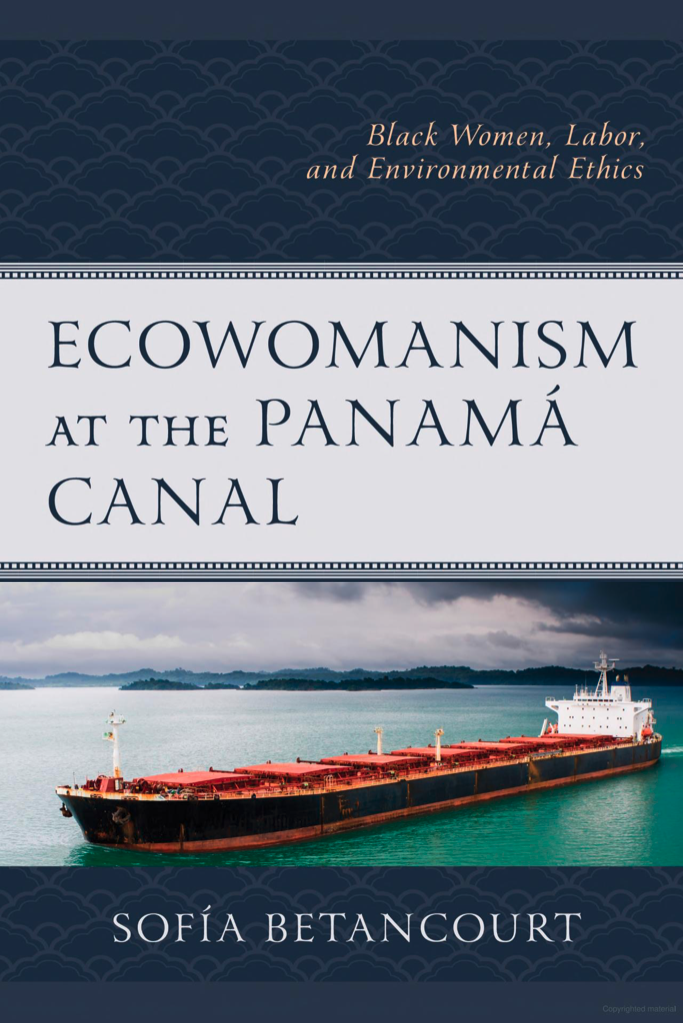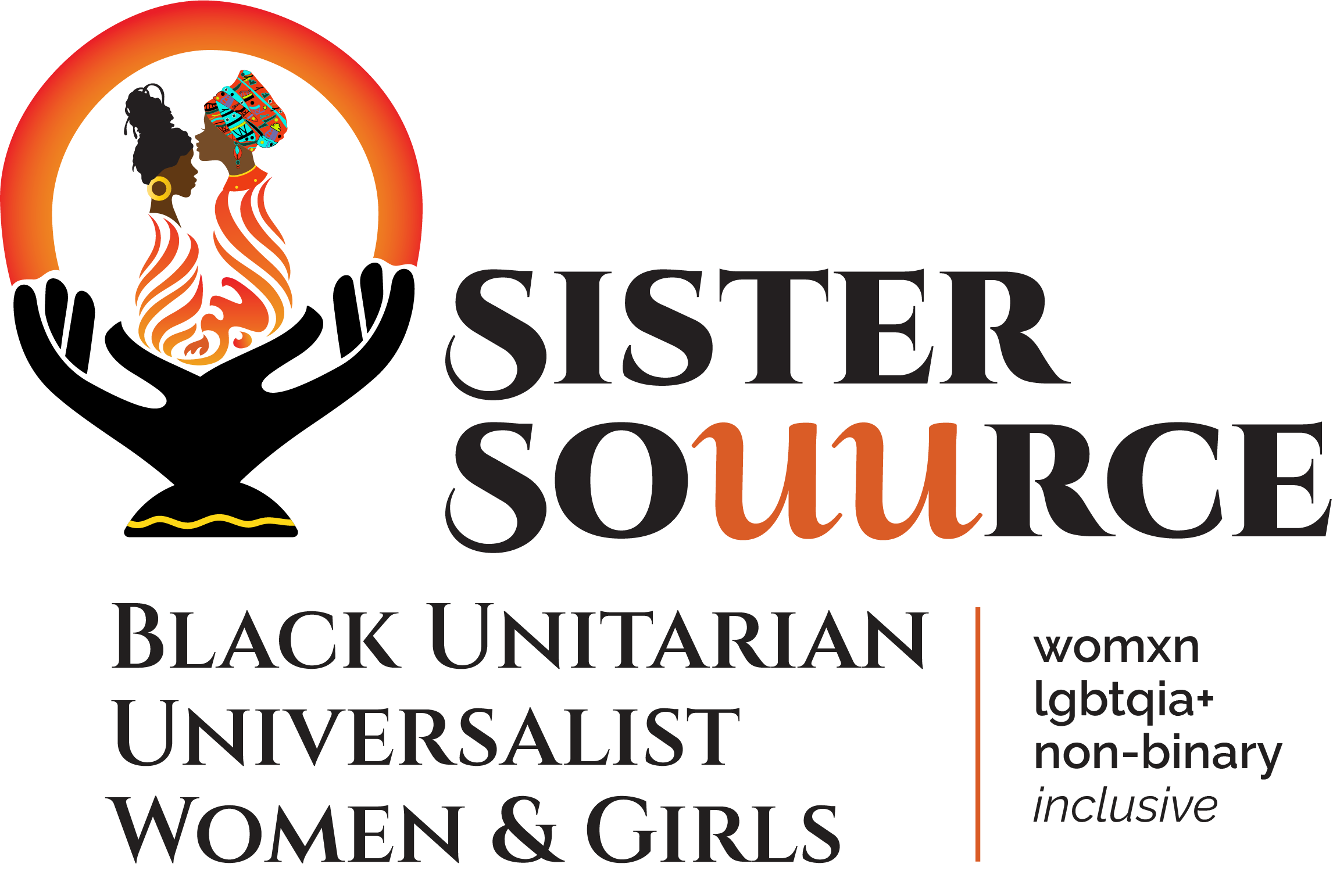
Book cover is copyrighted material used for illustrative purposes.
Book Review – Ecowomanism at the Panama Canal: Black Women, Labor, and Environmental Ethics by Sophia Betancourt
“Our ancestors offer us blueprints for surviving the unimaginable and through our very existence bear witness to the birthing of new ways.”[1]
Ecowomanism at the Panama Canal: Black Women, Labor, and Environmental Ethics by Sophia Betancourt, a Unitarian Universalist minister, represents a significant scholarly contribution to ecofeminism and environmental justice. The book documents the building of the Panama Canal that was accomplished by the labor of men and women from the African diaspora. While the men worked as laborers, most women worked in what appears to be exclusively domestic positions. These women came either as single women looking for work, or married women working to supplement their family income.
Betancourt’s book examines the erroneous narrative the global north has perpetuated about the Panama Canal that historically inspired ideas and values of “progress, engineering might, benevolence, idealism.” This narrative characterized the Panama Canal as “a selfless gift” built by the global north’s American engineers. Using an ecofeminist framework Betancourt exposes the “manifest destiny… tropical triumphalism, Protestant ethic of control and masked imperialism” of the global north that continues to “marginalize and harm both undervalued human populations in the global south and the environment as a whole.”[2]
Panamanians are correcting this false narrative through research, thus revealing the erased contributions of Caribbean migrants, primarily Black male laborers from Barbados and Jamaica. However, Black women’s voices are still largely ignored. [3] Betancourt pays tribute to the voices of these “routinely silenced” women, thus repairing the imposed silence through a rereading of history employing an anti-imperialist lens and achieving a needed archival repair.
Her recovery and repair of history is partly accomplished through the retrieval of archival research and the oral history of female migrants from the Caribbean, including those of her own family members. She reminds the reader of the untold stories of the men and women that endured “mud, mosquitoes and malaria” to erect the Panama Canal.[4] These “silver men and women” were referred to as such because the white workers were paid in gold and Black workers were paid in silver.
Betancourt introduces her readers to terms like Generational Displacement, which occurs when communities have been forcibly displaced from their ancestral homes. Using an ecowomanist framework, Betancourt examines not only the disruption in human life but the climate disruption and its toll on the land. The sole photograph included in the book (which numbers one hundred and forty nine pages) shows a picture of the dying jungle, Gatun Lake. Taken in February, 1919, the picture captures the corpses of trees in Gatun Lake. If these trees were humans, the massive killing of trees and displacement of land and dirt would be viewed as genocide.
While the feat of connecting two oceans for the first time in history is often spoken of in glowing accolades conjuring images of engineering geniuses, Betancourt guides the reader through a deconstruction of narratives centered not in human values but hegemonic dominance, domination that resulted in the building of one of the seven wonders of the world. While the engineers viewed their handiwork as necessary to restructure and control the uncooperative Earth, Betancourt points to Emily Townes’ emphasis on “false moral universals as tools of power.” Thus, from the standpoint of hegemonic dominance, the destruction of trees and land, and any subsequent devastation, are mere environmental casualties that were necessary and routine.
Betancourt draws heavily on Emily Townes’ works that focus on the production of evil. Townes asserts we must “undermine the cultural productions of those ideologies most responsible for perpetuating structures of evil through domination.”[5] Betancourt suggests that in order to be successful in responding to environmental devastation we will have to reclaim the wisdom from communities of the African diaspora.[6] Betancourt identifies Black ecowomanist ethicists’ efforts, thus disproving the erroneous notion that Black communities are anti-environmentalists.[7]
One of the most intriguing aspects of Betancourt’s book is her treatment of Obeah, the collective set of African derived or influenced practices that draws on the supernatural to affect change. She asserts that Europeans have tried to “define, conscribe and control” the practice of Obeah out of fear of losing dominance and legal ownership over colonized and enslaved communities. So while Betancourt acknowledges that Obeah can be performed in the hopes of controlling others or cruelly imposing one’s will, she maintains that it also contains the possibility of reclaiming one’s humanity – one’s connection with God – and rehumanizing entire communities. Betancourt asserts that Obeah had a critical role in resistance efforts in locations where Blacks were colonized. She cites Jamaica as a primary example. Betancourt describes the following:[8]
“…The practices of Obeah can be used for healing, they can be used for poisoning, they can be used for a reckoning and recompense against injustice, and they can be used for protection and an investment in personal and communal freedom. The choice over whether and how to make use of such methods to be the hand of healing or the one that serves poison allows for a level of resistance that rightly caused great distress among enslavers and colonial authorities alike.”
Studies indicate that Obeah was frequently listed as a factor and source of fear among white enslavers. Betancourt reports that over time the majority of crimes committed using Obeah were by females rather than males and usually reflected efforts to resist oppressive conditions.
Conclusion
“It is ours to gather seeds left behind in conditions unfavorable for growth and sow them in gardens of possibility our mothers could only dream about at times.”[9]
If Betancourt’s book were solely devoted to remediating and correcting the false narrative that erased the workers and their contributions, it would already be an invaluable contribution. However, the author’s vision far exceeds that limited goal. She demonstrates how the Panama Canal has contributed to climate disruption, and how the Canal represents some of the earliest seeds of American empire building.[10]
Betancourt’s research goes beyond the politics of the global north and south governments. She investigates the multiple narratives centered in the lived experiences of the workers. It is the engagement of numerous voices from diverse social locations that invites new ways of approaching research. Elements of Participatory Action Research are evidenced in her methodology that places the research subjects at the center of the research as valuable participants, while superimposing a justice-centered framework.
The building of knowledge through shared experiences and survival on new lands allows Betancourt to “see, hear and appreciate the diversities in our midst.” It is the “counter memory” that “seeks to open up subversive spaces of counterhegemony and argues for a reconstitution of history.” The reclamation of inherited environmental cultures pushes against the erroneous myth of Black communities as anti-environmentalism. Betancourt includes the names of Black ecowomanist scholars to debunk this myth once and for all.
Our ability to shift the environmental devastation that currently exists requires constructing ethics that interrogate decolonization, that are diasporic in nature, and that apply a multireligious, environmentalist approach. Immense gratitude is due the Rev. Dr. Sophia Betancourt for this brilliant research, which Emilie Townes predicts will become a new primer for environmental justice. In Melanie Harris’ words, “Betancourt guides us along the path of undoing harm and recommitting our hearts to the work and practice of earth justice.”
– Reviewed by Rev. Dr. Qiyamah A. Rahman
• • •
[1] Betancourt, Sofia. Ecowomanism at the Panama Canal: Black Women, Labor, and Environmental Ethics. Maryland: Lexington Books – Rowman & Littlefield Publishing Group, Inc. 2022. p. 15.
[2] Betancourt, Sofia. Ecowomanism at the Panama Canal: Black Women, Labor, and Environmental Ethics. Maryland: Lexington Books – Rowman & Littlefield Publishing Group, Inc. 2022. p. 3.
[3] Betancourt, Sofia. Ecowomanism at the Panama Canal: Black Women, Labor, and Environmental Ethics. Maryland: Lexington Books – Rowman & Littlefield Publishing Group, Inc. 2022. p. 53.
[4] Betancourt, Sofia. Ecowomanism at the Panama Canal: Black Women, Labor, and Environmental Ethics. Maryland: Lexington Books – Rowman & Littlefield Publishing Group, Inc. 2022. p. 3.
[5] Sofia Betancourt. Ecowomanism at the Panama Canal: Black Women, Labor, and Environmental Ethics. Maryland: Lexington Books – Rowman & Littlefield Publishing Group, Inc. 2022. p. 11.
[6] Sofia Betancourt. Ecowomanism at the Panama Canal: Black Women, Labor, and Environmental Ethics. Maryland: Lexington Books – Rowman & Littlefield Publishing Group, Inc. 2022. p. 9.
[7] They included: Melanie Harris, Delores Williams, Emilie Townes, Karen Baker-Fletcher, Layli Maparyan, Mercy Oduyoye and Xiumei Pu.
[8] Sofia Betancourt. Ecowomanism at the Panama Canal: Black Women, Labor, and Environmental Ethics. Maryland: Lexington Books – Rowman & Littlefield Publishing Group, Inc. 2022. p. 97.
[9] Sofia Betancourt. Ecowomanism at the Panama Canal: Black Women, Labor, and Environmental Ethics. Maryland: Lexington Books – Rowman & Littlefield Publishing Group, Inc. 2022. p. 16.
[10] Sofia Betancourt. Ecowomanism at the Panama Canal: Black Women, Labor, and Environmental Ethics. Maryland: Lexington Books – Rowman & Littlefield Publishing Group, Inc. 2022. p. 2.
